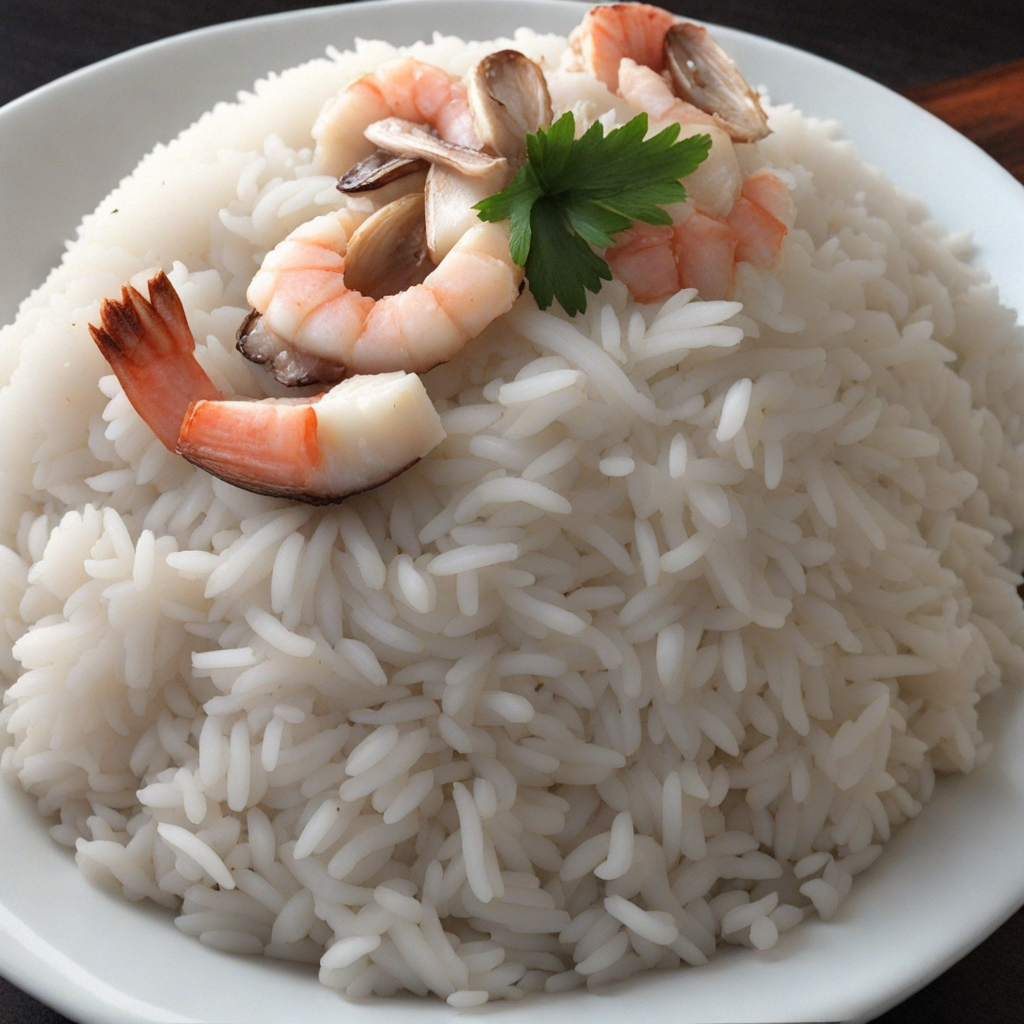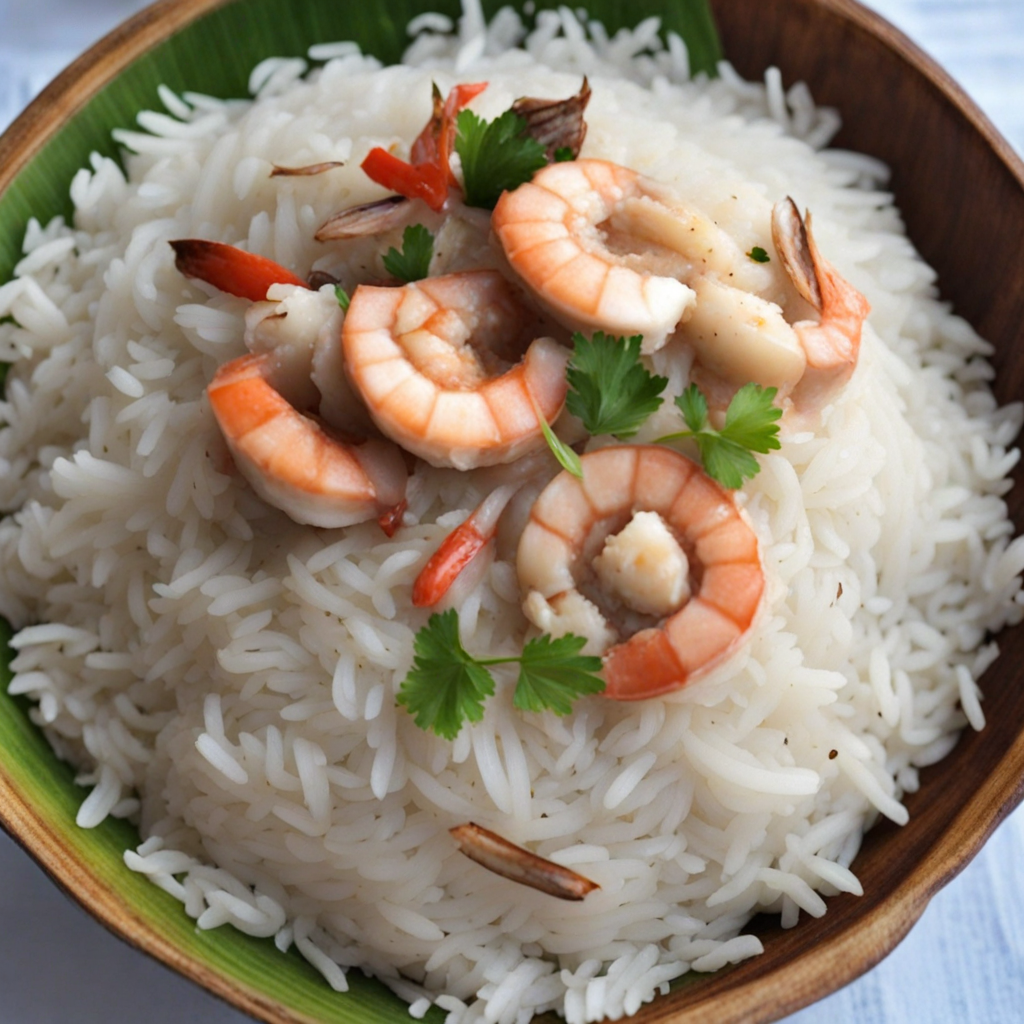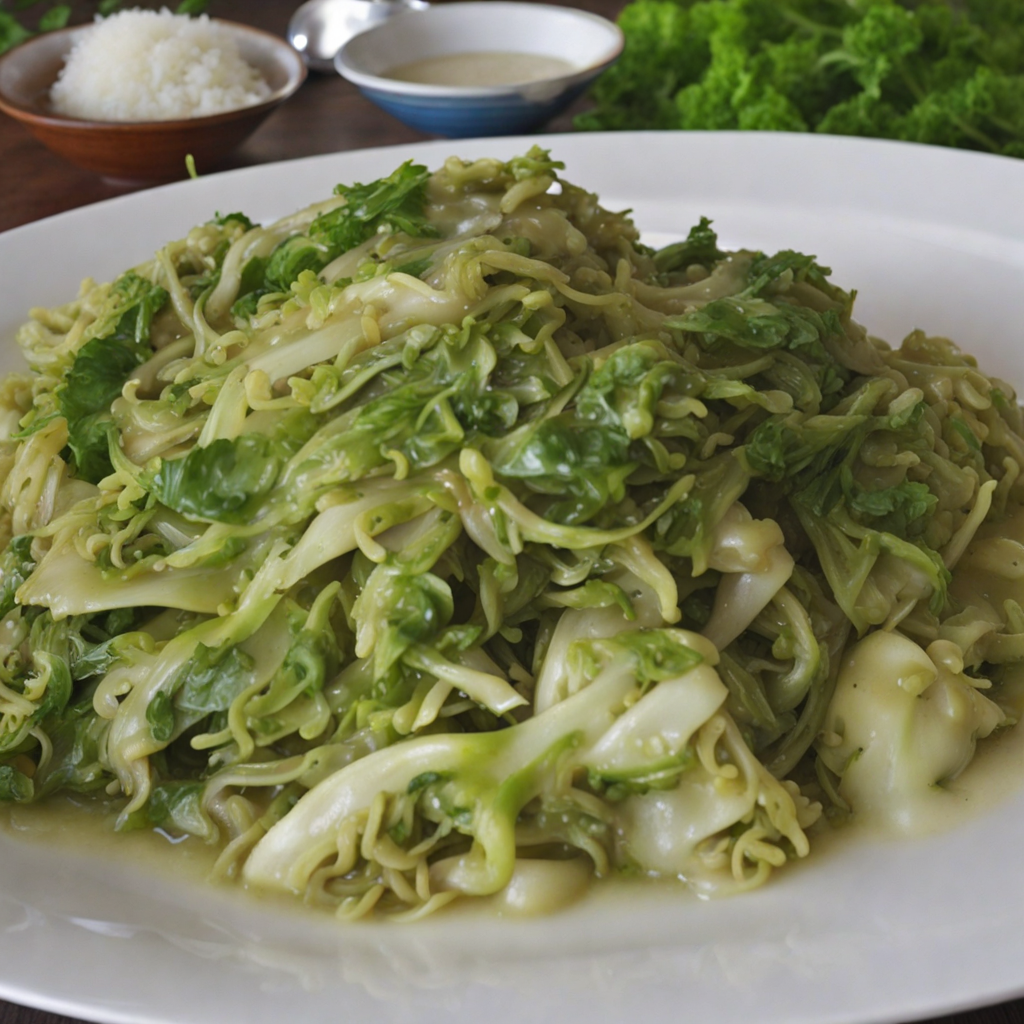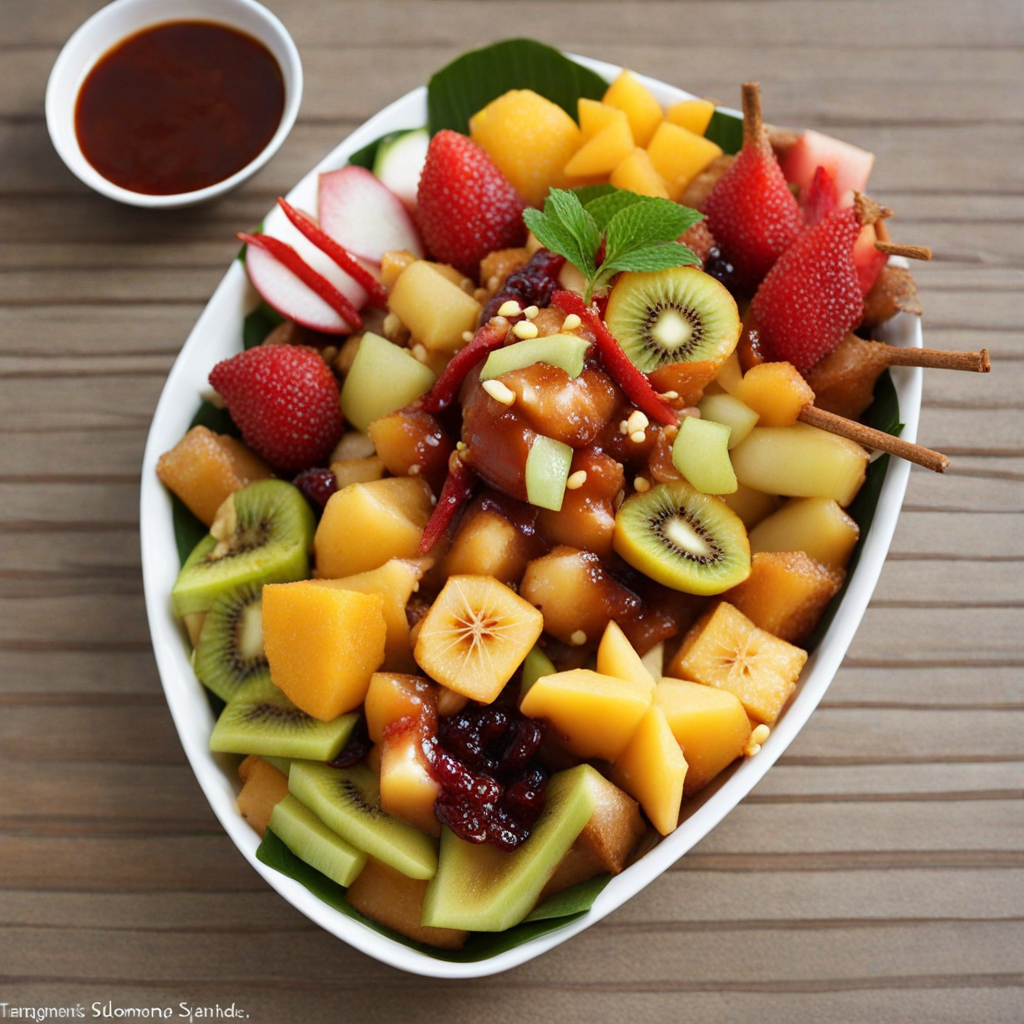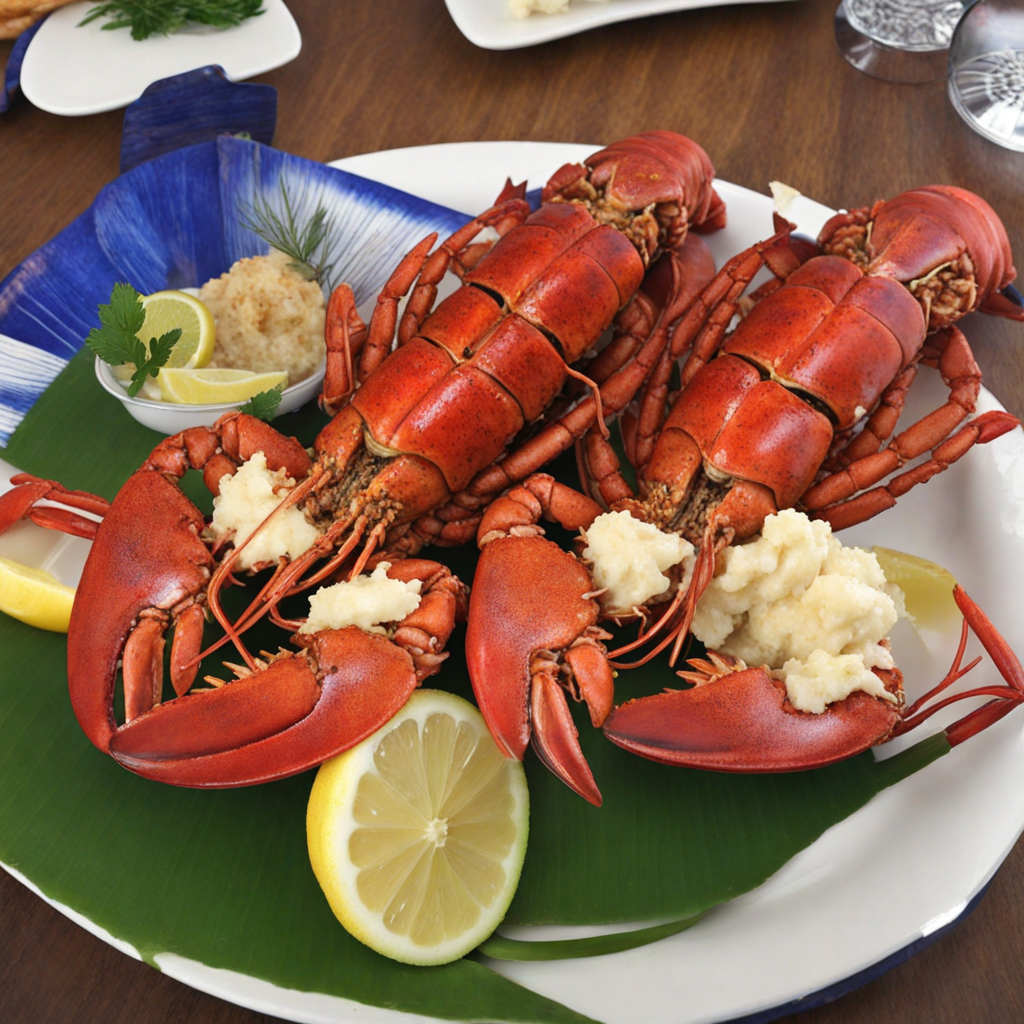Coconut Rice
Coconut Rice is a delightful dish that embodies the lush, tropical essence of the Solomon Islands. This fragrant rice is cooked with fresh coconut milk, which infuses each grain with a creamy richness and a subtle sweetness. The combination of the nutty flavor from the coconut and the fluffy texture of the rice creates a harmonious balance that transports your taste buds to the sun-kissed shores of the islands. Often, the rice is complemented by a sprinkle of grated coconut on top, enhancing its natural coconut flavor and providing a delightful contrast in texture. Traditionally, Coconut Rice is served alongside a variety of dishes, including grilled fish, meats, or fresh vegetables, making it a versatile accompaniment that can elevate any meal. The dish is often enjoyed during family gatherings and celebrations, showcasing the importance of community and sharing in Solomon Islands culture. Its simplicity allows the fresh ingredients to shine, giving a taste of the islands' rich agricultural bounty, where coconuts are harvested daily. As you explore Coconut Rice, you'll discover that it not only satiates your hunger but also offers a glimpse into the culinary traditions of the Solomon Islands. The natural sweetness of the coconut pairs beautifully with savory dishes, making it an excellent base for curries and stews. Each mouthful is a reminder of the tropical paradise from which it hails, inviting you to savor the vibrant flavors and textures that define this unique and beloved dish.
How It Became This Dish
The Culinary Journey of Coconut Rice in the Solomon Islands #### Origins of Coconut Rice The Solomon Islands, a lush archipelago located in the South Pacific, is a treasure trove of biodiversity and cultural heritage. Among its many culinary delights, coconut rice stands out as a quintessential dish that embodies the islands' rich history and complex cultural tapestry. The origins of coconut rice can be traced back to the early Polynesian settlers who arrived in the region around 1000 BCE. These early inhabitants brought with them a wealth of agricultural knowledge and a variety of staple crops, including taro, yams, and, crucially, coconuts. Coconuts are often referred to as the "tree of life" in many Pacific cultures, and their versatility is evident across countless recipes. The settlers learned to cultivate coconuts not only for their refreshing water and nourishing meat but also for their oil, which became integral in cooking. Rice, while not indigenous to the region, was introduced through trade and colonization, particularly by the British in the 19th century. The combination of these two essential ingredients—rice and coconut—resulted in the beloved dish known today as coconut rice. #### Cultural Significance Coconut rice is more than just a meal; it is woven into the social and cultural fabric of the Solomon Islands. This dish is traditionally prepared for communal gatherings, celebrations, and significant life events such as weddings, births, and funerals. It symbolizes hospitality and unity, where sharing a meal strengthens bonds within families and communities. In many Solomon Islands villages, food preparation is a communal effort, often involving women and children who gather to cook and share stories. The process of making coconut rice is a ritual in itself. Freshly grated coconut meat is mixed with cooked rice, often infused with a pinch of salt and sometimes sweetened with sugar or flavored with spices. This dish is typically served alongside fish, meat, or vegetables, showcasing the islands' rich marine and agricultural bounty. Coconut rice also reflects the islands' relationship with their environment. The coconut palm thrives in the tropical climate, and its fruits are abundant. This accessibility makes coconut rice an economical and sustainable dish, embodying the principles of resourcefulness that are crucial for island communities. In times of hardship, such as during natural disasters or economic downturns, coconut rice remains a staple that can be prepared with minimal ingredients. #### Development Over Time The history of coconut rice has been shaped by various influences, from trade to colonization and globalization. In the early 20th century, the introduction of new cooking methods and ingredients began to transform traditional recipes. The arrival of Asian immigrants, particularly from China and India, brought new flavors and techniques that enriched the culinary landscape of the Solomon Islands. These communities introduced ingredients such as soy sauce, ginger, and garlic, which found their way into modified versions of coconut rice. As the Solomon Islands moved towards independence in the 1970s, there was a resurgence of interest in indigenous foods and culinary traditions. This period saw a revival of traditional cooking methods, such as cooking over an open fire or using earth ovens, known as "umu." Coconut rice became a symbol of cultural pride and identity, often highlighted in national celebrations and food festivals. Chefs began to experiment with the dish, incorporating local ingredients such as pandan leaves, lemongrass, and wild herbs, adding layers of flavor while maintaining its authenticity. In recent decades, globalization has further influenced coconut rice, with an influx of international cuisines and dining trends. The rise of tourism in the Solomon Islands has introduced a new audience to the dish, leading to innovative presentations in restaurants and resorts. Chefs are now showcasing coconut rice as a gourmet item, pairing it with exotic seafood, tropical fruits, and modern plating techniques. Despite these changes, traditional methods of preparing coconut rice remain prevalent in rural areas, where families continue to honor age-old recipes passed down through generations. This balance between tradition and innovation reflects the adaptability of the Solomon Islanders, who embrace both their heritage and the influences of the modern world. #### Contemporary Significance Today, coconut rice stands as a culinary ambassador for the Solomon Islands, celebrated not only in homes but also in restaurants and food festivals around the world. The dish has gained recognition beyond its geographical boundaries, often featured in Pacific Islander cuisine showcases. It serves as a reminder of the islands’ rich history and the resilience of its people. In recent years, there has been an increasing emphasis on sustainability and local sourcing, with coconut rice being at the forefront of this movement. Chefs and home cooks alike are focusing on using organic coconut and locally grown rice, promoting a farm-to-table approach that honors the land and its resources. This trend not only supports local farmers but also ensures the preservation of traditional agricultural practices. Furthermore, coconut rice has found a place in the global conversation around food security and nutrition. As the world grapples with issues related to climate change and food sustainability, dishes like coconut rice highlight the importance of utilizing indigenous, nutrient-rich ingredients that require minimal resources to grow and sustain. #### Conclusion The history of coconut rice in the Solomon Islands is a tale of resilience, adaptability, and cultural pride. From its humble beginnings as a staple of early settlers to its current status as a beloved dish that embodies the spirit of the islands, coconut rice has evolved while remaining deeply rooted in tradition. It serves as a testament to the Solomon Islanders' ability to embrace change while honoring their heritage, making it not just a dish but a symbol of their identity and connection to the land. As we savor this delightful and aromatic dish, we partake in a story that spans centuries, encompassing the essence of the Solomon Islands and its people.
You may like
Discover local flavors from Solomon Islands


